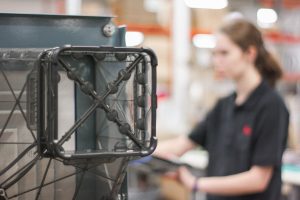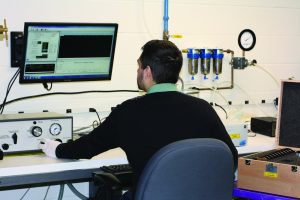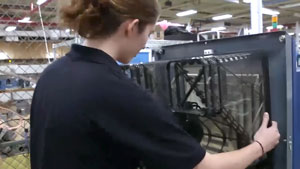 High quality, well-functioning test equipment is an important part of any balancer’s toolbox. As a balancer, your customers rely on you to keep their buildings comfortable, to help them meet federal building regulations, and to help them save energy and money. Your customers expect you to provide accurate readings, and in order to do so, you need to use reliable, calibrated test equipment. By regularly calibrating your equipment, you will be able to provide your customers with the excellent service they expect.
High quality, well-functioning test equipment is an important part of any balancer’s toolbox. As a balancer, your customers rely on you to keep their buildings comfortable, to help them meet federal building regulations, and to help them save energy and money. Your customers expect you to provide accurate readings, and in order to do so, you need to use reliable, calibrated test equipment. By regularly calibrating your equipment, you will be able to provide your customers with the excellent service they expect.
 Equipment calibration is necessary to maintain accurate readings. If your piece of equipment is physically damaged, dropped, or overloaded, the readings may be affected. Equipment measurements will also naturally shift over time, so it is important that equipment is recalibrated even if it has not experienced any obvious damage. It is important to understand what type of calibration your equipment requires in order to be used most effectively. For typical day-to-day use, annual calibration may be sufficient. But there may be other cases where more frequent calibration is necessary. For example, you may be working on a project with strict calibration standards or have a customer who requires proof of recent calibration. Keep a regular calibration schedule, but be flexible so you can service your customers in the way that they need.
Equipment calibration is necessary to maintain accurate readings. If your piece of equipment is physically damaged, dropped, or overloaded, the readings may be affected. Equipment measurements will also naturally shift over time, so it is important that equipment is recalibrated even if it has not experienced any obvious damage. It is important to understand what type of calibration your equipment requires in order to be used most effectively. For typical day-to-day use, annual calibration may be sufficient. But there may be other cases where more frequent calibration is necessary. For example, you may be working on a project with strict calibration standards or have a customer who requires proof of recent calibration. Keep a regular calibration schedule, but be flexible so you can service your customers in the way that they need.
 There are many types of calibration services, but this blog will focus on three “tiers” of calibration. As the calibration service tiers increase in complexity, they also increase in price, so it is important to understand what you will receive with each service. First, we will discuss calibration without data; second, calibration with data; and third, calibration with data and uncertainties.
There are many types of calibration services, but this blog will focus on three “tiers” of calibration. As the calibration service tiers increase in complexity, they also increase in price, so it is important to understand what you will receive with each service. First, we will discuss calibration without data; second, calibration with data; and third, calibration with data and uncertainties.
The first tier of calibration, the certificate without data, provides information that indicates that the product has been calibrated to either the listed specifications or your requirements and meets several standards, such as 10 CFR Part 21 and Part 50 Appendix B and 21 CFR Part 820.75. Of the three calibration services discussed in this post, this is the most basic and will be sufficient in applications that do not require any additional proof of calibration.
The second tier is a calibration certificate with data. This tier includes everything offered with a standard calibration certificate, with the added benefit of before and after data and tolerances. This tier is a good option if you expect your customer to request test results in addition to the calibration certificate.
The third tier is a calibration certificate with data and uncertainties. In addition to the calibration certificate and data, you will also receive the data uncertainties and test uncertainty ratio. Every measurement, no matter the type of equipment, comes with some amount of uncertainty. If you or your customer expects precise measurements, purchasing this certificate will allow you to disclose the data’s uncertainty so your customer can best interpret the equipment’s results.[1]
 While your calibration needs will vary based on your applications, it is recommended to have your equipment calibrated at least once a year. When choosing which tier of calibration services to purchase, consider what your customers expect from you. If, in general, they just want to know that you use calibrated equipment, a calibration certificate without data will likely be sufficient. If you frequently work with customers who adhere to very strict building regulations, consider a calibration certificate with data and uncertainties so you can provide proof you meet their standards.
While your calibration needs will vary based on your applications, it is recommended to have your equipment calibrated at least once a year. When choosing which tier of calibration services to purchase, consider what your customers expect from you. If, in general, they just want to know that you use calibrated equipment, a calibration certificate without data will likely be sufficient. If you frequently work with customers who adhere to very strict building regulations, consider a calibration certificate with data and uncertainties so you can provide proof you meet their standards.
Dwyer Instruments is an OEM offering calibration services for a variety of test equipment and other industrial products.
[1] https://www.isobudgets.com/why-measurement-uncertainty-is-important/

